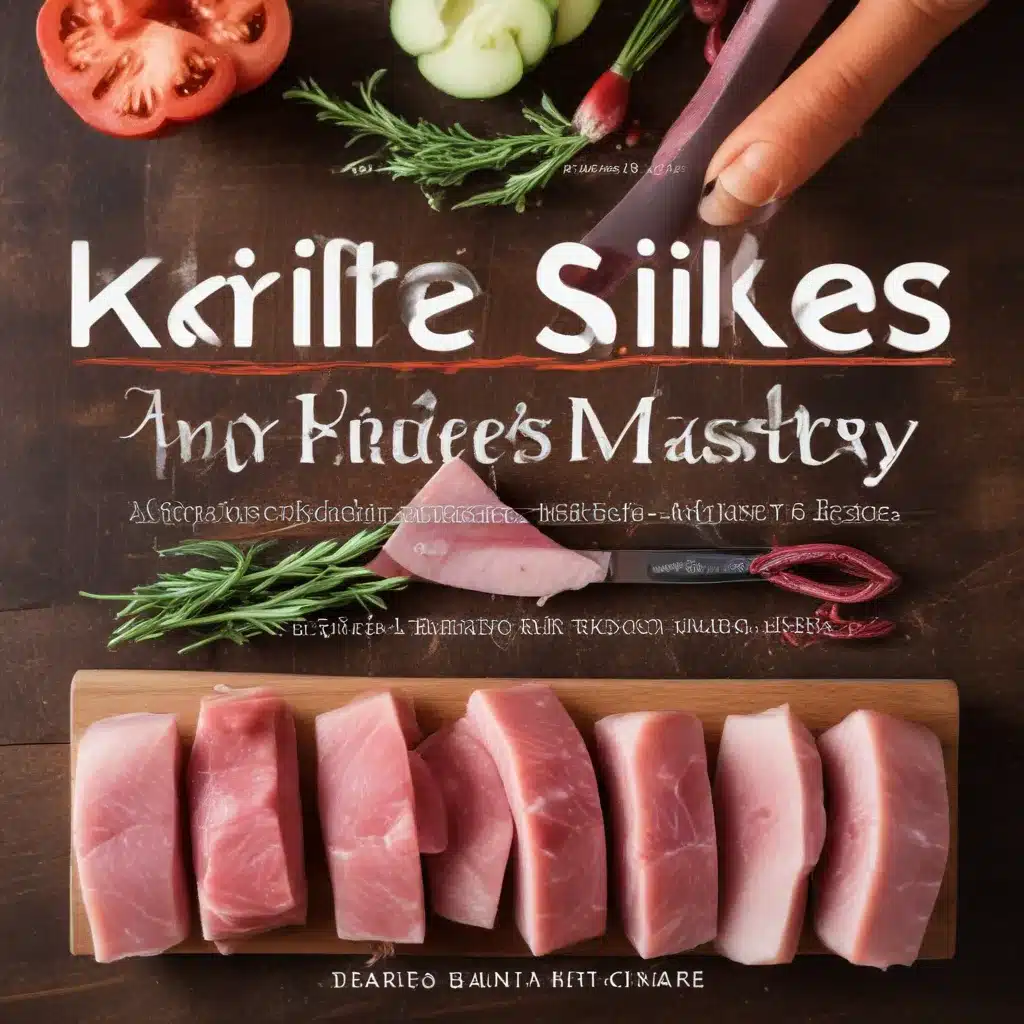
Unlocking the Secrets of Exceptional Knife Handling
As a seasoned culinary professional, I’ve learned that mastering knife skills is not just a nice-to-have – it’s an essential foundation for any cook who aspires to culinary excellence. Whether you’re a professional chef or a passionate home cook, honing your knife techniques can significantly enhance your efficiency, precision, and overall enjoyment in the kitchen.
In this comprehensive guide, I’ll take you on a journey through the core knife skills every cook should possess: dicing, slicing, and mincing. From understanding the right knife for the job to perfecting your hand positioning and cutting techniques, you’ll gain the confidence and expertise to handle any ingredient with ease and finesse.
Choosing the Right Knife for the Task
Before we dive into the specifics of knife skills, it’s crucial to understand the different knife styles and how they align with various cutting techniques. We’ll focus on three primary categories of knives:
- Chopping Knife: Designed for efficient, powerful chopping motions, this knife excels at tasks like dicing onions or mincing herbs.
- Slicing Knife: With its long, thin blade, the slicing knife is perfect for making clean, uniform slices of ingredients like tomatoes, cucumbers, or roasted meats.
- Chef’s Knife: The versatile chef’s knife is a true workhorse in the kitchen, adept at a wide range of cutting tasks, from chopping to mincing to slicing.
Regardless of the knife you choose, remember that the blade should maintain continuous contact with the cutting board throughout your cutting motion. Avoid scraping the knife against the board, as this can dull the edge over time.
Mastering the Grip
Proper hand positioning is crucial for ensuring both precision and safety when using a knife. Let’s start with the grip:
- Knife Hand: Wrap your fingers around the handle, with your index finger extended along the spine of the blade. Your thumb should rest on the opposite side of the blade, providing stability and control.
- Free Hand: This hand plays a vital role in guiding the knife and securing the ingredient being cut. Form a “claw” shape with your fingers, keeping the tips tucked under and the knuckles positioned as a “ridge” against the blade.
Remember, the goal is to maintain a firm, confident grip while keeping your fingers and knuckles safe from the blade’s path. This hand positioning will become second nature with practice, allowing you to cut with efficiency and confidence.
Cutting Techniques: Dicing, Slicing, and Mincing
Now, let’s dive into the core cutting techniques that will elevate your knife skills.
Dicing
Dicing involves transforming ingredients, such as onions, carrots, or potatoes, into small, uniform cubes. This technique is particularly useful for creating consistent textures and ensuring even cooking.
- Preparation: Start by trimming the ends of your ingredient and slicing it in half. Place the flat side down on the cutting board for stability.
- Slicing: Using a chopping or chef’s knife, make parallel slices from one side of the ingredient to the other, keeping the slices evenly spaced.
- Dicing: Rotate the ingredient 90 degrees and make perpendicular cuts, creating a grid-like pattern of cubes.
- Adjustments: If necessary, flip the ingredient and repeat the slicing and dicing steps to ensure all sides are evenly diced.
Remember to maintain a steady, rocking motion with your knife, allowing the blade to do the work rather than relying solely on muscle power.
Slicing
Slicing is the art of creating thin, uniform pieces from ingredients like vegetables, fruits, or meats. The key to mastering this technique is maintaining control and precision.
- Preparation: Ensure your ingredient has a stable, flat surface to rest on the cutting board.
- Slicing: Position your free hand’s fingers in the “claw” shape, with the knuckles acting as a guide for the knife blade. Gently rock the knife back and forth, making thin, even slices.
- Adjustments: For ingredients with an irregular shape, like onions or tomatoes, consider lowering your wrist to maintain better control as the surface curves.
The goal with slicing is to create consistent, paper-thin pieces that will cook evenly and enhance the visual appeal of your dishes.
Mincing
Mincing is the process of transforming ingredients, such as herbs or garlic, into tiny, uniform pieces. This technique is essential for infusing maximum flavor and aroma into your dishes.
- Preparation: Trim and prepare your ingredient, ensuring a flat surface to work with.
- Slicing: Using a chopping or chef’s knife, make parallel slices across the ingredient, keeping the cuts close together.
- Dicing: Rotate the ingredient 90 degrees and make perpendicular cuts, creating a fine dice.
- Mincing: Finally, rock the knife back and forth, using a swift, precise motion to transform the diced pieces into a fragrant, finely minced mixture.
When mincing, focus on maintaining a consistent cutting motion and keeping the blade in continuous contact with the cutting board. This will help you achieve the desired texture and prevent any loss of flavor-packed juices.
Putting It All Together: Practice Makes Perfect
Mastering knife skills is a journey, not a destination. The more you practice, the more natural and effortless these techniques will become. Start with simple ingredients like onions, carrots, and potatoes, and gradually work your way up to more complex cutting tasks.
Remember, safety should always be your top priority. Keep your knives sharp, your work surface clean, and your focus unwavering. With time and dedication, you’ll develop the muscle memory and confidence to tackle any culinary challenge that comes your way.
For more information on Kitchen Warrior and our comprehensive resources for home cooks and culinary professionals, be sure to visit our website. Happy cooking!


